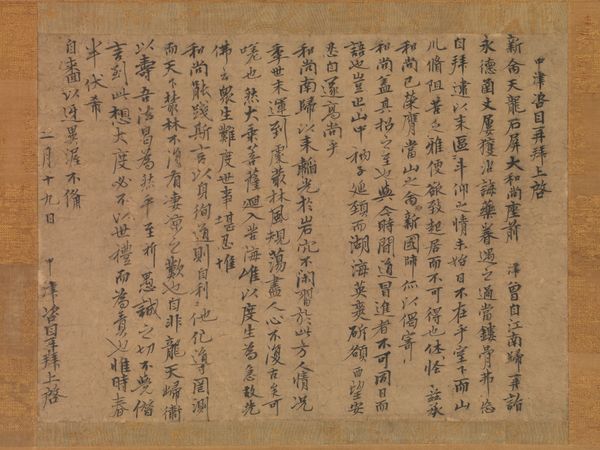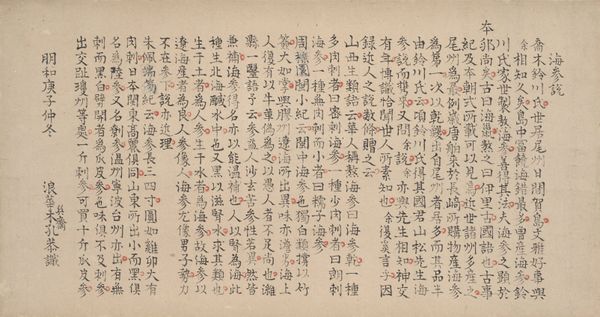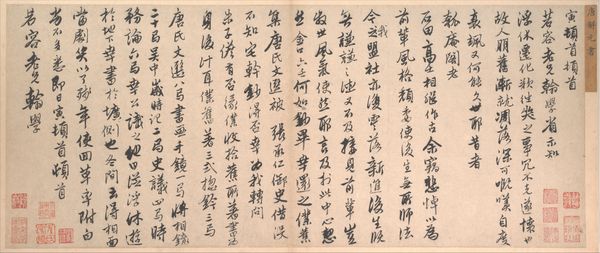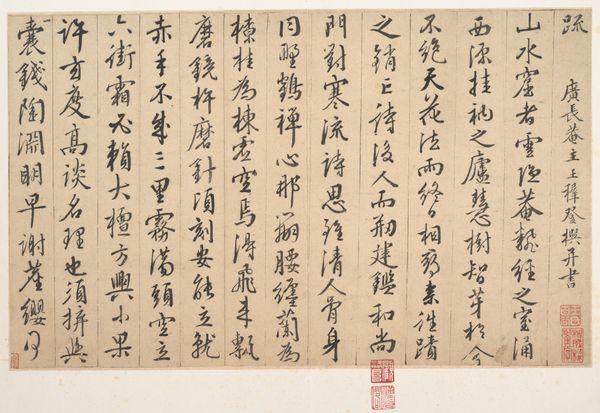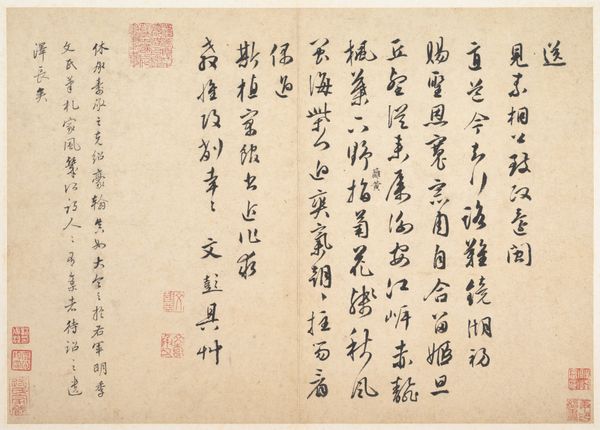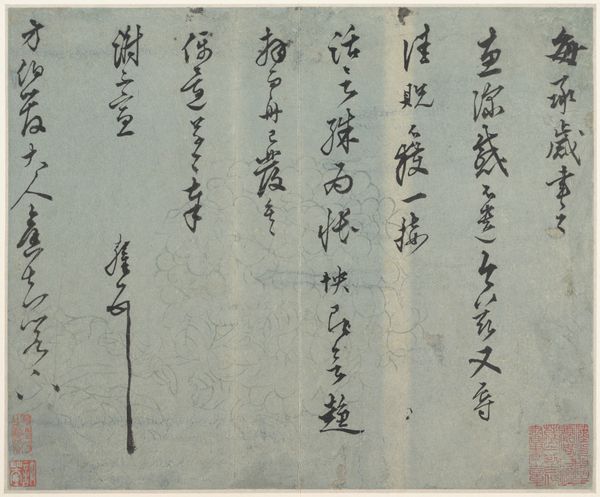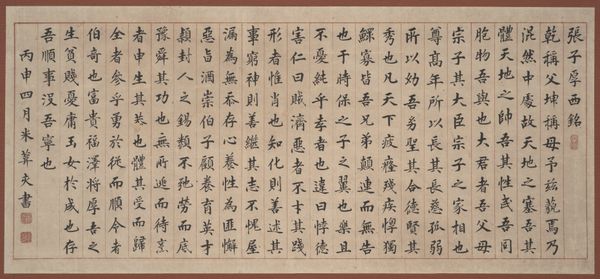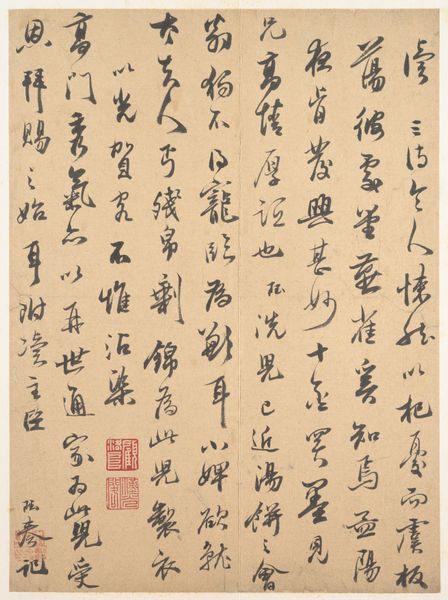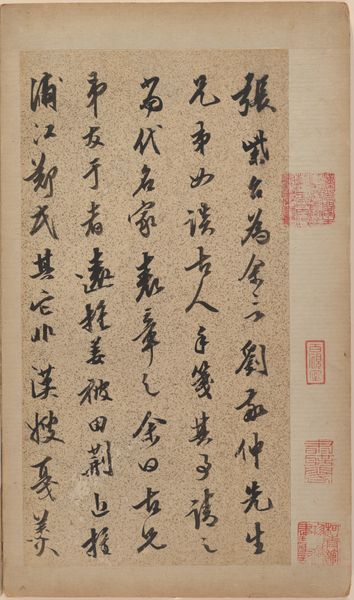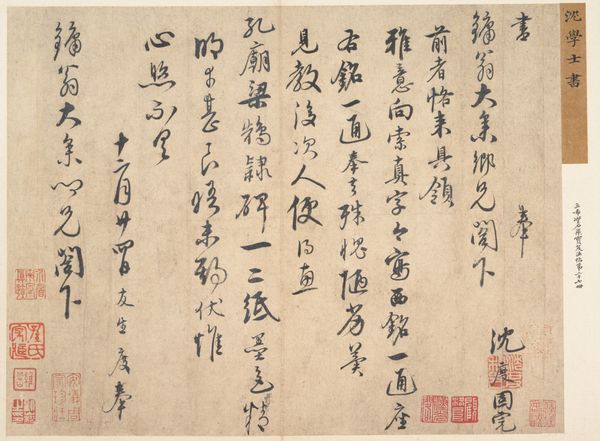
Buddhist Text- Fragment from Tun Huang Cave Sanctuary c. 600
0:00
0:00
paper, ink-on-paper, ink
#
asian-art
#
paper
#
ink-on-paper
#
ink
#
calligraphic
#
calligraphy
Dimensions: 10 3/8 x 16 1/4 in. (26.35 x 41.28 cm) (sheet)
Copyright: Public Domain
Curator: This fragment comes to us from the Mogao Caves, near Dunhuang in China, dating back to around 600 AD. It’s a piece of Buddhist scripture rendered in ink on paper. Known as the "Buddhist Text-Fragment from Tun Huang Cave Sanctuary," it now resides in the collection of the Minneapolis Institute of Art. Editor: The material presence is startling; the ochre paper just breathes antiquity. It's not pristine, but wonderfully, palpably *old.* I almost feel the hand of the scribe on its surface; the calligraphic forms dance with a rhythm all their own. The characters— are they full of grace or forceful declarations? I can’t decide. Curator: Its material condition indeed tells a tale – consider the paper, likely crafted from hemp or ramie fibers, a readily available resource then. And think of the socio-economic structures that supported such a meticulous, skilled practice of calligraphy. It wasn't just art; it was a form of labor intertwined with the monastic economy. Editor: Labor certainly is imbued, the patient dipping of brush into ink and meticulous brushstrokes give birth to meaning and art— I'm picturing the environment, the lamplit caves, a hushed atmosphere punctuated by the scratch of brush on paper as countless hours of devotion unfold. Curator: The materiality is further highlighted by its function within the monastery – the circulation of religious knowledge was heavily dependent on this manuscript technology. The act of replicating scriptures helped to propagate and standardize Buddhist doctrine. Editor: Right! It feels devotional and didactic at the same time, and I love that duality. This artifact whispers narratives of both production and belief across the expanse of centuries. How thrilling that its message keeps radiating outwardly in spite of its damaged form. Curator: The tangible presence, this specific history that has unfolded – this to me underscores the importance of these manuscripts. Editor: I agree; its endurance invites introspection, about the way we make our present by continuously inheriting pieces from our remote and recent past. It certainly leaves me reflective, wondering where the echo of my current moment will land centuries from now.
Comments
minneapolisinstituteofart almost 2 years ago
⋮
This rare fragment from an unidentified sutra is written in a seventeen-character format typical of the majority of the Buddhist manuscripts found in the famous Mogao cave sanctuaries at Dunhuang which yielded thousands of early Buddhist writings. Dating to the Sui dynasty (581-618), the paper has a smooth surface, horizontal chain lines, and is dyed yellow with herb juice to prevent insect damage. The exacting calligraphy is an early kai style executed with traces of li (clerical) script in the structure of each character. The writing is well-balanced and carefully structured with controlled brush strokes. The use of the "taboo" characters shih and qi indicating the second (627-49) and third (650-83) emperors of the Tang dynasty, implies that the manuscript predates those rulers placing it around 600 CE.
Join the conversation
Join millions of artists and users on Artera today and experience the ultimate creative platform.
